The Ultimate Guide To Proper Pool Brushing Techniques
Owning a pool is a luxury that adds value to your home and provides endless enjoyment. However, maintaining it requires dedication and the right techniques to keep it safe and clean. One of the most critical aspects of pool maintenance is regular brushing. Proper pool brushing not only helps keep your pool looking pristine but also prevents the buildup of algae, bacteria, and other contaminants that can be harmful to both your health and pool equipment. In this guide, we'll dive into why regular pool brushing is essential, explore different types of pool brushes, provide step-by-step instructions for effective brushing, highlight common mistakes to avoid, and offer tips to make the process easier and more efficient.
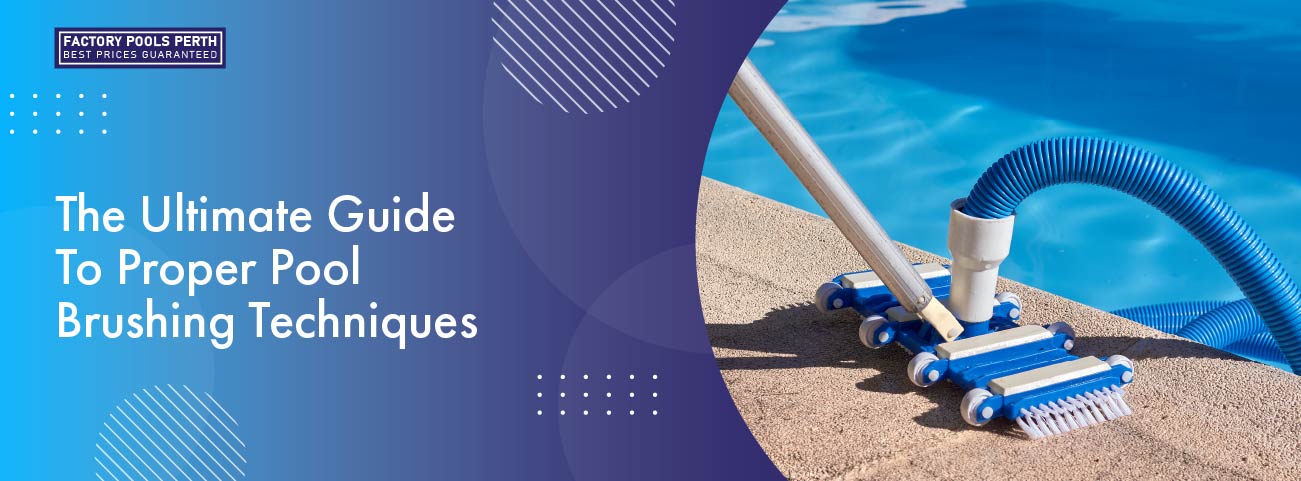
Types of Pool Brushes
Different Pool Brush Types and Their Specific Uses
Selecting the right pool brush is crucial for effective cleaning. Here are the main types of pool brushes:
- Nylon Brushes: These are versatile and can be used on almost any pool surface, making them a popular choice for regular maintenance. Their soft bristles are gentle on delicate surfaces, such as vinyl and fibreglass, ensuring that the pool surface remains unscathed while effectively removing dirt and debris.
- Stainless Steel Brushes: Ideal for concrete and gunite pools, these brushes are tougher and can handle stubborn algae and dirt. The rigid bristles are designed to scrub away the most persistent grime. However, they are not suitable for vinyl or fibreglass pools, as the hard bristles can cause damage to these softer materials, potentially leading to costly repairs.
- Combination Brushes: Featuring both nylon and stainless steel bristles, these brushes are great for concrete pools, providing a balance between durability and gentleness. The nylon bristles help to clean larger debris and provide a gentler touch, while the stainless steel bristles tackle tougher spots, making these brushes highly effective for comprehensive cleaning without being overly abrasive.
Recommended Brush Types for Different Pool Surfaces
- Concrete Pools: For these surfaces, stainless steel or combination brushes are the most effective. They have the strength to tackle tough grime and algae build-up without causing any damage to the concrete. Regular use of these brushes ensures a clean and safe swimming environment.
- Vinyl Pools: When cleaning vinyl pools, it’s crucial to use a nylon brush. These brushes are designed to be gentle and prevent any scratching or tearing of the liner. Consistent brushing helps maintain the liner’s integrity and appearance.
- Fibreglass Pools: Fibreglass pools require a bit more care, and a nylon brush is ideal for this. It’s gentle enough to clean effectively without damaging the smooth and shiny surface of the fibreglass. Routine brushing keeps the pool looking pristine and prolongs its lifespan.
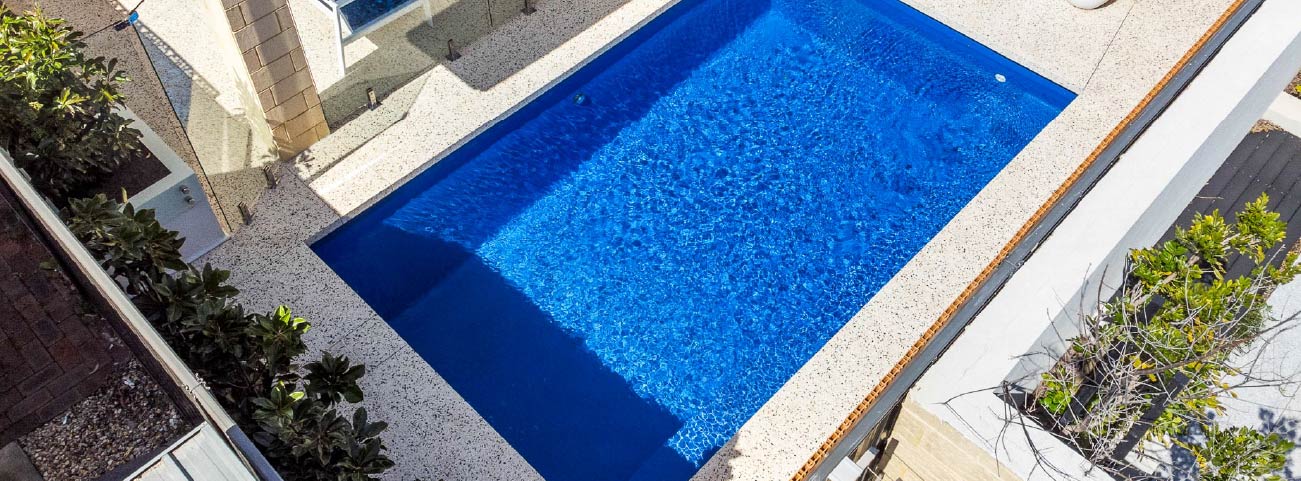
Techniques for Effective Pool Brushing
Step-by-Step Instructions
Preparation
- Ensure you have the right brush for your pool surface.
- Attach the brush to a telescopic pole for extended reach.
- Skim the pool to remove any floating debris.
Brushing the Walls
- Start at the shallow end and work your way to the deep end.
- Use a firm, sweeping motion, brushing from top to bottom.
- Pay extra attention to corners, steps, and ladders where algae often accumulate.
Brushing the Floor
- Brush towards the main drain to facilitate better circulation and filtration.
- Use overlapping strokes to ensure comprehensive coverage.
Brushing the Waterline
- This area is prone to algae buildup and staining.
- Brush with extra care using horizontal strokes.
Frequency of Pool Brushing
- Light Usage: If your pool sees minimal activity, brushing once a week should suffice.
- Heavy Usage: For frequently used pools, or during warm weather when algae growth accelerates, aim to brush at least twice a week.
Common Mistakes to Avoid
Using the Wrong Brush: Using an inappropriate brush type can damage the surface of your pool, leading to costly repairs. For instance, a stainless steel brush is suitable for concrete pools but can scratch a vinyl or fibreglass surface. Always match the brush to the specific material of your pool to avoid unnecessary damage.
Inconsistent Brushing: Irregular brushing can lead to algae buildup and inefficient cleaning, compromising the cleanliness and safety of your pool. A consistent brushing schedule, ideally weekly, helps prevent algae growth and ensures that your pool remains sparkling clean. Prioritise hard-to-reach areas and corners, which are more prone to buildup.
Neglecting the Waterline: The waterline is often overlooked but is crucial for preventing stains and algae growth. This area is particularly susceptible to the accumulation of oils, sunscreen, and other debris that can cause unsightly stains. Regularly scrubbing the waterline as part of your cleaning routine helps to maintain the overall appearance and hygiene of your pool.
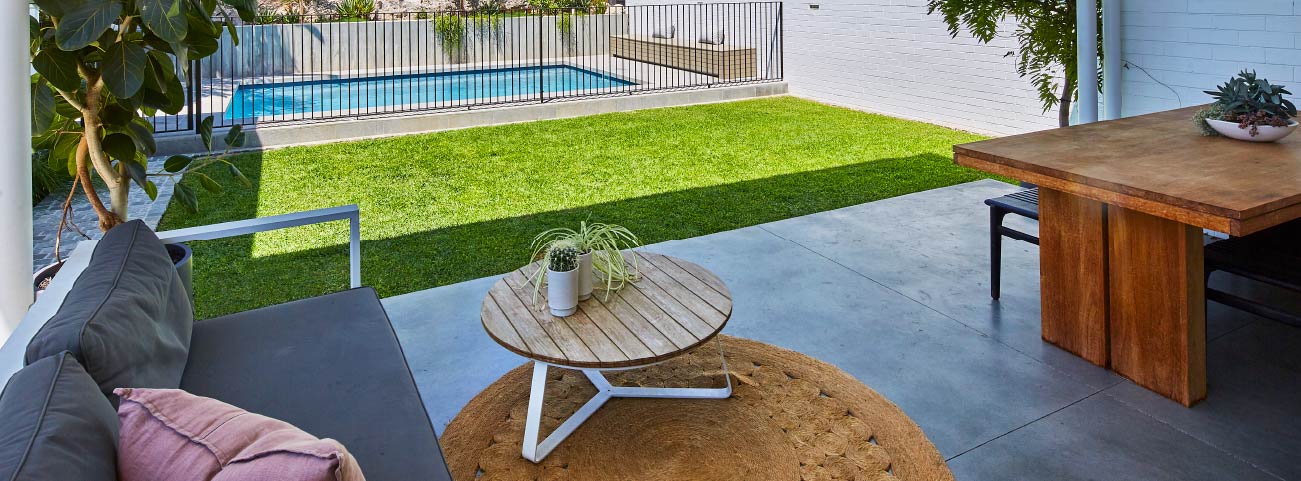
Tips for Making Pool Brushing Easier and More Efficient
Use a Telescopic Pole: This versatile tool extends your reach significantly, making it easier to brush the entire pool, especially the floor and walls. By using a telescopic pole, you can ensure that every corner of your pool is thoroughly cleaned, reducing the buildup of algae and dirt.
Invest in Quality Brushes: Durable, high-quality brushes are essential for effective pool maintenance. They last longer and clean more efficiently, helping to remove stubborn stains and debris. Opt for brushes that are specifically designed for pool surfaces to prevent damage and ensure optimal results.
Integrate Brushing into Your Routine: Make brushing a regular part of your pool maintenance routine. Combine it with other tasks, such as skimming the surface for leaves and debris and checking chemical levels. This integration streamlines your process, making pool maintenance less time-consuming and more efficient.
Utilise Pool Cleaning Robots: While robotic cleaners are not a replacement for manual brushing, they can be a helpful addition to your cleaning arsenal. These robots can assist in maintaining the pool’s cleanliness between manual sessions, reducing the overall workload and helping to keep the water crystal clear.
Conclusion
Proper pool brushing is vital for maintaining the health and longevity of your pool. By understanding the importance of regular brushing, choosing the right brush, employing effective techniques, avoiding common mistakes, and using tools to aid in the process, you can ensure your pool remains a sparkling oasis for years to come.
We encourage all pool owners to incorporate these techniques into their regular maintenance regimen. Share your experiences and tips with us, and stay tuned for more insights on keeping your pool in top condition. For further reading on related pool maintenance, visit our blog or contact our team of experts.
The Ultimate Guide To Proper Pool Brushing Techniques
Owning a pool is a luxury that adds value to your home and provides endless enjoyment. However, maintaining it requires dedication and the right techniques to keep it safe and clean. One of the most critical aspects of pool maintenance is regular brushing. Proper pool brushing not only helps keep your pool looking pristine but also prevents the buildup of algae, bacteria, and other contaminants that can be harmful to both your health and pool equipment. In this guide, we'll dive into why regular pool brushing is essential, explore different types of pool brushes, provide step-by-step instructions for effective brushing, highlight common mistakes to avoid, and offer tips to make the process easier and more efficient.
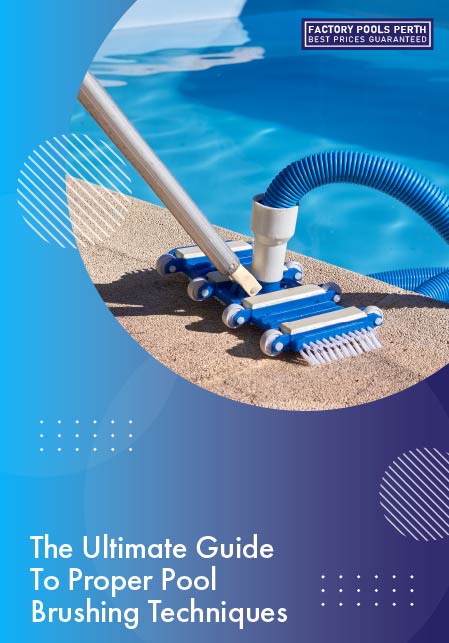
Types of Pool Brushes
Different Pool Brush Types and Their Specific Uses
Selecting the right pool brush is crucial for effective cleaning. Here are the main types of pool brushes:
- Nylon Brushes: These are versatile and can be used on almost any pool surface, making them a popular choice for regular maintenance. Their soft bristles are gentle on delicate surfaces, such as vinyl and fibreglass, ensuring that the pool surface remains unscathed while effectively removing dirt and debris.
- Stainless Steel Brushes: Ideal for concrete and gunite pools, these brushes are tougher and can handle stubborn algae and dirt. The rigid bristles are designed to scrub away the most persistent grime. However, they are not suitable for vinyl or fibreglass pools, as the hard bristles can cause damage to these softer materials, potentially leading to costly repairs.
- Combination Brushes: Featuring both nylon and stainless steel bristles, these brushes are great for concrete pools, providing a balance between durability and gentleness. The nylon bristles help to clean larger debris and provide a gentler touch, while the stainless steel bristles tackle tougher spots, making these brushes highly effective for comprehensive cleaning without being overly abrasive.
Recommended Brush Types for Different Pool Surfaces
- Concrete Pools: For these surfaces, stainless steel or combination brushes are the most effective. They have the strength to tackle tough grime and algae build-up without causing any damage to the concrete. Regular use of these brushes ensures a clean and safe swimming environment.
- Vinyl Pools: When cleaning vinyl pools, it’s crucial to use a nylon brush. These brushes are designed to be gentle and prevent any scratching or tearing of the liner. Consistent brushing helps maintain the liner’s integrity and appearance.
- Fibreglass Pools: Fibreglass pools require a bit more care, and a nylon brush is ideal for this. It’s gentle enough to clean effectively without damaging the smooth and shiny surface of the fibreglass. Routine brushing keeps the pool looking pristine and prolongs its lifespan.
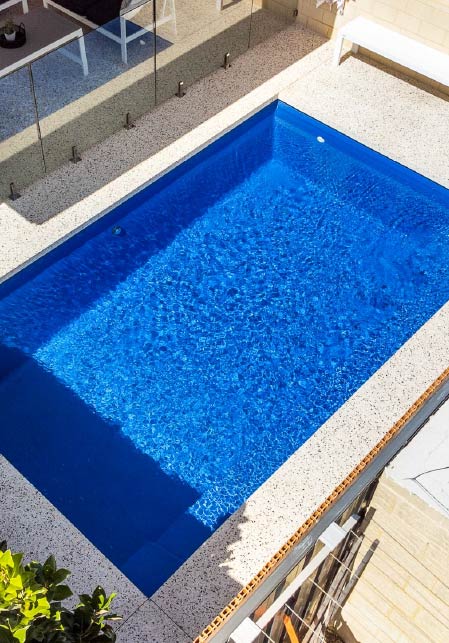
Techniques for Effective Pool Brushing
Step-by-Step Instructions
Preparation
- Ensure you have the right brush for your pool surface.
- Attach the brush to a telescopic pole for extended reach.
- Skim the pool to remove any floating debris.
Brushing the Walls
- Start at the shallow end and work your way to the deep end.
- Use a firm, sweeping motion, brushing from top to bottom.
- Pay extra attention to corners, steps, and ladders where algae often accumulate.
Brushing the Floor
- Brush towards the main drain to facilitate better circulation and filtration.
- Use overlapping strokes to ensure comprehensive coverage.
Brushing the Waterline
- This area is prone to algae buildup and staining.
- Brush with extra care using horizontal strokes.
Frequency of Pool Brushing
- Light Usage: If your pool sees minimal activity, brushing once a week should suffice.
- Heavy Usage: For frequently used pools, or during warm weather when algae growth accelerates, aim to brush at least twice a week.
Common Mistakes to Avoid
Using the Wrong Brush: Using an inappropriate brush type can damage the surface of your pool, leading to costly repairs. For instance, a stainless steel brush is suitable for concrete pools but can scratch a vinyl or fibreglass surface. Always match the brush to the specific material of your pool to avoid unnecessary damage.
Inconsistent Brushing: Irregular brushing can lead to algae buildup and inefficient cleaning, compromising the cleanliness and safety of your pool. A consistent brushing schedule, ideally weekly, helps prevent algae growth and ensures that your pool remains sparkling clean. Prioritise hard-to-reach areas and corners, which are more prone to buildup.
Neglecting the Waterline: The waterline is often overlooked but is crucial for preventing stains and algae growth. This area is particularly susceptible to the accumulation of oils, sunscreen, and other debris that can cause unsightly stains. Regularly scrubbing the waterline as part of your cleaning routine helps to maintain the overall appearance and hygiene of your pool.
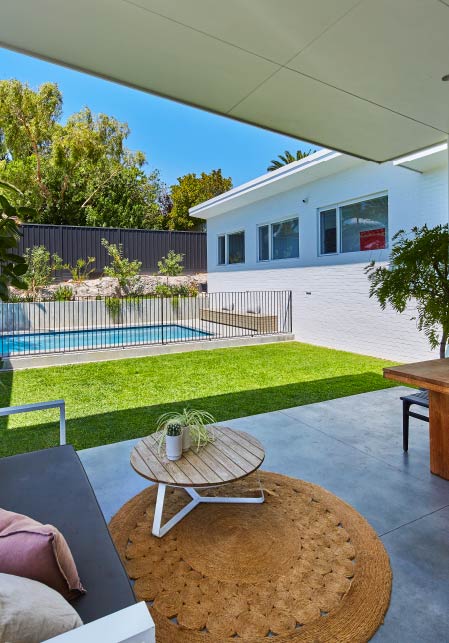
Tips for Making Pool Brushing Easier and More Efficient
Use a Telescopic Pole: This versatile tool extends your reach significantly, making it easier to brush the entire pool, especially the floor and walls. By using a telescopic pole, you can ensure that every corner of your pool is thoroughly cleaned, reducing the buildup of algae and dirt.
Invest in Quality Brushes: Durable, high-quality brushes are essential for effective pool maintenance. They last longer and clean more efficiently, helping to remove stubborn stains and debris. Opt for brushes that are specifically designed for pool surfaces to prevent damage and ensure optimal results.
Integrate Brushing into Your Routine: Make brushing a regular part of your pool maintenance routine. Combine it with other tasks, such as skimming the surface for leaves and debris and checking chemical levels. This integration streamlines your process, making pool maintenance less time-consuming and more efficient.
Utilise Pool Cleaning Robots: While robotic cleaners are not a replacement for manual brushing, they can be a helpful addition to your cleaning arsenal. These robots can assist in maintaining the pool’s cleanliness between manual sessions, reducing the overall workload and helping to keep the water crystal clear.
Conclusion
Proper pool brushing is vital for maintaining the health and longevity of your pool. By understanding the importance of regular brushing, choosing the right brush, employing effective techniques, avoiding common mistakes, and using tools to aid in the process, you can ensure your pool remains a sparkling oasis for years to come.
We encourage all pool owners to incorporate these techniques into their regular maintenance regimen. Share your experiences and tips with us, and stay tuned for more insights on keeping your pool in top condition. For further reading on related pool maintenance, visit our blog or contact our team of experts.


